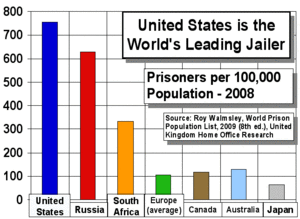Median Home Values: Unadjusted
2000 1990 1980 1970 1960 1950 1940
United States $119,600 $79,100 $47,200 $17,000 $11,900 $7,354 $2,938
Alabama $85,100 $53,700 $33,900 $12,200 $8,600 $4,473 $1,610
Alaska $144,200 $94,400 $76,300 $22,700 $9,100 $3,477 NA
Arizona $121,300 $80,100 $54,800 $16,300 $11,100 $5,935 $1,400
Arkansas $72,800 $46,300 $31,100 $10,500 $6,700 $4,087 $1,100
California $211,500 $195,500 $84,500 $23,100 $15,100 $9,564 $3,527
Colorado $166,600 $82,700 $64,100 $17,300 $12,300 $7,151 $2,091
Connecticut $166,900 $177,800 $65,600 $25,500 $16,700 $11,862 $4,615
Delaware $130,400 $100,100 $44,400 $17,100 $12,400 $9,079 $4,159
Dist. of Columbia $157,200 $123,900 $68,800 $21,300 $15,400 $14,498 $7,568
Florida $105,500 $77,100 $45,100 $15,000 $11,800 $6,612 $2,218
Georgia $111,200 $71,300 $36,900 $14,600 $9,500 $5,235 $1,957
Hawaii $272,700 $245,300 $118,100 $35,100 $20,900 $12,283 NA
Idaho $106,300 $58,200 $45,600 $14,100 $10,600 $5,852 $1,600
Illinois $130,800 $80,900 $52,800 $19,800 $14,700 $8,646 $3,277
Indiana $94,300 $53,900 $37,200 $13,800 $10,200 $6,226 $2,406
Iowa $82,500 $45,900 $40,600 $13,900 $9,900 $6,320 $2,253
Kansas $83,500 $52,200 $37,800 $12,100 $9,300 $5,462 $1,733
Kentucky $86,700 $50,500 $34,200 $12,600 $8,800 $5,283 $2,074
Louisiana $85,000 $58,500 $43,000 $14,600 $10,700 $5,141 $1,414
Maine $98,700 $87,400 $37,900 $12,800 $8,800 $4,856 $2,008
Maryland $146,000 $116,500 $58,300 $18,700 $11,900 $8,033 $3,031
Massachusetts $185,700 $162,800 $48,400 $20,600 $13,800 $9,144 $3,837
Michigan $115,600 $60,600 $39,000 $17,500 $12,000 $7,496 $2,863
Minnesota $122,400 $74,000 $53,100 $18,000 $12,800 $7,806 $3,024
Mississippi $71,400 $45,600 $31,400 $11,200 $7,900 $4,159 $1,189
Missouri $89,900 $59,800 $36,700 $14,400 $10,900 $6,399 $2,392
Montana $99,500 $56,600 $46,500 $14,000 $10,900 $5,797 $1,651
Nebraska $88,000 $50,400 $38,000 $12,400 $9,400 $5,918 $2,156
Nevada $142,000 $95,700 $68,700 $22,400 $15,200 $8,859 $1,987
New Hampshire $133,300 $129,400 $48,000 $16,400 $10,700 $6,199 $2,505
New Jersey $170,800 $162,300 $60,200 $23,400 $15,600 $10,408 $4,528
New Mexico $108,100 $70,100 $45,300 $13,000 $10,700 $5,697 $656
New York $148,700 $131,600 $45,600 $22,500 $15,300 $10,152 $4,389
North Carolina $108,300 $65,800 $36,000 $12,800 $8,000 $4,901 $1,802
North Dakota $74,400 $50,800 $43,900 $13,000 $9,800 $5,396 $1,626
Ohio $103,700 $63,500 $44,900 $17,600 $13,400 $8,304 $3,415
Oklahoma $70,700 $48,100 $35,600 $11,100 $7,900 $5,228 $1,293
Oregon $152,100 $67,100 $56,900 $15,400 $10,500 $6,846 $2,343
Pennsylvania $97,000 $69,700 $39,100 $13,600 $10,200 $6,992 $3,205
Rhode Island $133,000 $133,500 $46,800 $18,200 $12,300 $9,767 $3,848
South Carolina $94,900 $61,100 $35,100 $13,000 $7,500 $5,112 $2,145
South Dakota $79,600 $45,200 $36,600 $11,400 $8,800 $5,410 $1,618
Tennessee $93,000 $58,400 $35,600 $12,500 $8,300 $5,268 $1,826
Texas $82,500 $59,600 $39,100 $12,000 $8,800 $5,805 $1,693
Utah $146,100 $68,900 $57,300 $16,800 $12,600 $7,409 $2,320
Vermont $111,500 $95,500 $42,200 $16,400 $9,700 $6,277 $2,836
Virginia $125,400 $91,000 $48,000 $17,100 $10,800 $6,581 $2,633
Washington $168,300 $93,400 $59,900 $18,500 $11,700 $7,169 $2,359
West Virginia $72,800 $47,900 $38,500 $11,300 $7,600 $5,473 $2,350
Wisconsin $112,200 $62,500 $48,600 $17,300 $12,600 $7,927 $3,232
Wyoming $96,600 $61,600 $59,800 $15,300 $12,300 $6,811 $2,174
NA: Not Available
Source: U.S. Census Bureau http://www.census.gov/hhes/www/housing/census/historic/values.html
Median Home Value 2010 $221,800
Approx Price of Gold
2010 2000 1990 1980 1970 1960 1950 1940
1250 290 380 650 35 35 35 35
Median Home Value Priced In Ounces of Gold
2010 2000 1990 1980 1970 1960 1950 1940
177 412 208 72 485 340 210 83



 b
b Approx Price of Silver
2010 2000 1990 1980 1970 1960 1950 1940
$23 5 4 16.39 1.63 .91 .80 .35
Median Home Value Priced In Ounces of Silver
2010 2000 1990 1980 1970 1960 1950 1940
9608 23920 19775 2880 10429 13076 9192 8394




 b
b
![gold Technical chart [Kitco Inc.]](http://www.kitco.com/lfgif/au3650lf_ma.gif)








